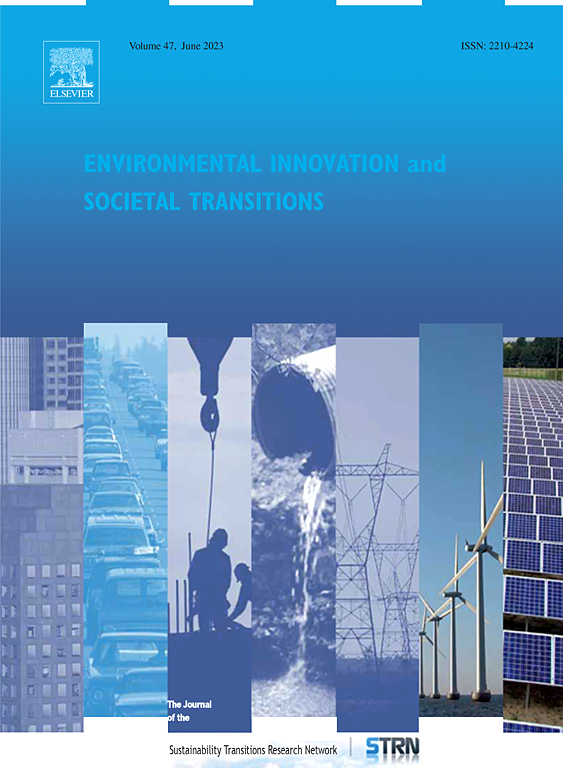可持续性评估与可持续性转型研究的相互作用:方法结合的益处
IF 6.1
2区 经济学
Q1 ENVIRONMENTAL SCIENCES
Environmental Innovation and Societal Transitions
Pub Date : 2025-06-03
DOI:10.1016/j.eist.2025.101019
引用次数: 0
摘要
本文探讨了将可持续性评估和可持续性转型研究的见解结合起来的机会和好处。首先,对这两个研究领域的关键本体论、认识论和方法论假设进行概述。其次,分析了这两个领域可能给另一个领域带来的好处。最后,根据两个研究领域之间的横截面的最新文献进行了综合。概述表明,两个研究领域之间存在根本差异,例如如何概念化可持续性,关于实现可持续性需要哪些知识,以及应用的分析单位和水平。尽管如此,这两个领域之间的相互作用和结果的交叉授粉可能是有益的。最后,从实践的角度来看,理论和方法顺序或并行结合的多学科方法是优选的。本文章由计算机程序翻译,如有差异,请以英文原文为准。
Interactions between Sustainability assessment and Sustainability transitions research: The benefits of combining approaches
This article explored opportunities and benefits of combining insights from sustainability assessment and sustainability transitions research. First, an overview of both research areas regarding their key ontological, epistemological, and methodological assumptions is presented. Second, an analysis of what benefits both areas may bring to the another was conducted. Finally, a synthesis was done based on recent literature in the cross-section between the two areas of research. The overview showed that there are fundamental differences between the two research areas, such as in how sustainability is conceptualized, regarding what knowledge is needed to achieve sustainability, and in the units and levels of analysis applied. Despite this, several ways in which interaction between the two areas and cross-pollination of results could be beneficial was shown. Finally, it is argued that a multi-disciplinary approach—where theories and methods are combined sequentially or in parallel—is preferred from a practical perspective.
求助全文
通过发布文献求助,成功后即可免费获取论文全文。
去求助
来源期刊

Environmental Innovation and Societal Transitions
Energy-Renewable Energy, Sustainability and the Environment
CiteScore
13.60
自引率
19.40%
发文量
90
审稿时长
56 days
期刊介绍:
Environmental Innovation and Societal Transitions serves as a platform for reporting studies on innovations and socio-economic transitions aimed at fostering an environmentally sustainable economy, thereby addressing structural resource scarcity and environmental challenges, particularly those associated with fossil energy use and climate change. The journal focuses on various forms of innovation, including technological, organizational, economic, institutional, and political, as well as economy-wide and sectoral changes in areas such as energy, transport, agriculture, and water management. It endeavors to tackle complex questions concerning social, economic, behavioral-psychological, and political barriers and opportunities, along with their intricate interactions. With a multidisciplinary approach and methodological openness, the journal welcomes contributions from a wide array of disciplines within the social, environmental, and innovation sciences.
 求助内容:
求助内容: 应助结果提醒方式:
应助结果提醒方式:


